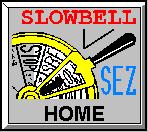Silly Puddy
Gallery
( This whole thing
is silly )
Headline News !! Live Cams !! |

Developing site...photos, drawings, and "off-the-top-of-the-head"
"messages" only for experimentation. Nautical flair incidental.
Instructions for getting started
Updated August 2004
Setting up, and using Outlook Express
Making a "signature" for your outgoing email
Scanning 35MM Slides Cheaply
Beveled Photos And Drop Shadows
With Sound Link Samples
Convert photos to look like old newsprint
How To Make Watermarks
Updated August 2004
Setting up, and using Outlook Express
Making a "signature" for your outgoing email
Scanning 35MM Slides Cheaply
Beveled Photos And Drop Shadows
With Sound Link Samples
Convert photos to look like old newsprint
How To Make Watermarks

When I
first started this project, I had no idea of what I'd say, or use it for, and I
am still not sure. Experimenting with how to make additional pages, I just
said anything to fill them, and called them "messages". Here's all
that old stuff in one place...making buttons for all those pages ( msgs ) was
dumb.
1) Presumption
2) Handling the EOT
3) Windlas
4) Soogying
5) Old Brooklyn Ferries
6) Styrofoam Cups
7) Night Orders
8) Derby Brown
9) Whistle Sounds
10) This Retired Seaman's View
1) Presumption
Nothing could be said better, than when it is said by
SLOWBELL
SLOWBELL gets to the point, and speaks plainly.
2) Handling the EOT
When "handling" the telegraph, do not jerk the handle, but move it smoothly, staying within the segment ( ahead, or astern ), unless moving from segment ( ahead, or astern ) to segment. Traverse the whole segment when moving within it, to make the signal heard at the other end...don't just move for instance from half to full, move the handle up to slow, and then down to full. Don't lean on the telegraph, it's bad for the shine.
3) Windlass
Do not leave your windlass in gear except when heaving around, or lowering the hook in gear. When at anchor, and fetched up, just secure the brake, don't set the pawl. When secured for sea, use only the brake, paul, and devil's claw. Remember, if you lose the plant while at anchor, or any other time, and want to pay out some more, or drop the hook, if the windlass is engaged you are up the creek. Also note that backing off the motor to relieve the clutch don't work...there's a bloody brake on the motor too, and it takes juice to release it.
4) Soogying
Before soogying, make sure the deck, and surrounding machinery, etc. is protected from splatter. If using TSP, make sure the water it's mixed in is good and hot. If using a wooden bucket, check for leaks, and make sure the handle isn't rotted away. If using sand-soap, use a heavy canvas as a cloth. Wet the bulkhead down from top to bottom with clear water, and start soogying from the deck up. If you start at the top, you will streak the lower part, and never get the streaks out, and you'll be in for it with the mate, or chief. In case of splatter, make sure anything that might get splattered is wet. When finished scrubbing, rinse with fresh, clear water, and swab the surrounding deck. Don't ever throw away the canvas...save it for the next job. Use the sand-soap until it can't be held anymore. If there be any water left in the bucket, check with the R/O, he may want to bathe.
5) Old Brooklyn Ferries
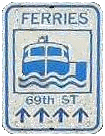
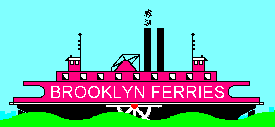 Way back in the early
part of this century ferries like the one to the left, painted box-car red, steamed from Brooklyn's
69th St. Pier to St. George, Staten Island. It only cost a nickle as a
pedestrian, and if you had a car, just a few cents more. They were later
replaced in the early forties by new boats, which were painted
dark green. Known as "Electric Ferries", and sometimes sporting that name in large white letters, otherwise "Brooklyn - Staten Island", they were built by General Ship & Engineering Works, East Boston, Mass., in 1941 for
Electric Ferries, Inc., of New York City. Their dimensions were: displacement 569 tons; length: 171'9"; beam: 54'; draft. 9'6"; did 13 knots; and were Diesel Electric. The company ran seven boats: The Tides, The Narrows, Hamilton, E.G. Diefenbach, Hudson, Gotham and St. George. In April of '42 ( during WW2 ), the Navy acquired the Hudson from the company, renamed it Gould Island, and gave it the designation of YFB-31. It was returned to the company in May of '46. The ferry service ended a few weeks after the bridge from Brooklyn to Staten Island came into service in November of '64.
Way back in the early
part of this century ferries like the one to the left, painted box-car red, steamed from Brooklyn's
69th St. Pier to St. George, Staten Island. It only cost a nickle as a
pedestrian, and if you had a car, just a few cents more. They were later
replaced in the early forties by new boats, which were painted
dark green. Known as "Electric Ferries", and sometimes sporting that name in large white letters, otherwise "Brooklyn - Staten Island", they were built by General Ship & Engineering Works, East Boston, Mass., in 1941 for
Electric Ferries, Inc., of New York City. Their dimensions were: displacement 569 tons; length: 171'9"; beam: 54'; draft. 9'6"; did 13 knots; and were Diesel Electric. The company ran seven boats: The Tides, The Narrows, Hamilton, E.G. Diefenbach, Hudson, Gotham and St. George. In April of '42 ( during WW2 ), the Navy acquired the Hudson from the company, renamed it Gould Island, and gave it the designation of YFB-31. It was returned to the company in May of '46. The ferry service ended a few weeks after the bridge from Brooklyn to Staten Island came into service in November of '64.
Today the new dock stands without a hint of its former glory.
Last Exit To Brooklyn
Hubert Selby, Jr.
Riding the Ferry and Other Adventures
Rober Hazel
Click Here for photo of 69th Street Pier showing the Ferry Slip, and a Liberty Ship moored on the pier's north side, and some further comments at the bottom of the page.
Click Here for photo of a Ferry Ramp showing the Mooring Winch, hawser, and hook...a rare find.
6) Styrofoam Cups
 Back when styrofoam cups were popular, and not
considered environmentally unsafe, you had to be careful at night to
remember where you left it. I am talking of course at night, in a
darkened wheel house underway. I had on one occasion a second mate who
would chew tobacco, and use his cup for a spittoon. If there is one
thing you don't need, is a slug of that stuff. More on spittoons later.
Back when styrofoam cups were popular, and not
considered environmentally unsafe, you had to be careful at night to
remember where you left it. I am talking of course at night, in a
darkened wheel house underway. I had on one occasion a second mate who
would chew tobacco, and use his cup for a spittoon. If there is one
thing you don't need, is a slug of that stuff. More on spittoons later.
.
7) Night Orders
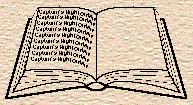 There is no standard, or guide for what
Captains considered necessary to put in their "night orders", nor
should there be. I have seen some night orders two pages long, and I have seen
the "one liners" like one skipper wrote night after
night..."Follow the red line.". The ship was a liner - so the same
charts were used each trip. Charts being considered expensive - $1.00 - they
were used until they fell apart, this particular skipper drawing in the course
lines using a red ball point pen. Over the years, after reading many night
orders, I came up with the following, which was pretty
standard:
There is no standard, or guide for what
Captains considered necessary to put in their "night orders", nor
should there be. I have seen some night orders two pages long, and I have seen
the "one liners" like one skipper wrote night after
night..."Follow the red line.". The ship was a liner - so the same
charts were used each trip. Charts being considered expensive - $1.00 - they
were used until they fell apart, this particular skipper drawing in the course
lines using a red ball point pen. Over the years, after reading many night
orders, I came up with the following, which was pretty
standard:"Observe
Standing Orders, and Rules of the Road. Give all shipping a Wide Berth. Keep a
Good Lookout. Follow the course line as plotted, allowing leeway as needed.
Call
me if at any time in doubt."
I very seldom
left a call, being an early riser anyways, unless landfall was expected early,
which I very seldom allowed to happen. Most always I scheduled arrivals, and
departures, dockings, and undockings, around my sleep schedule, and meal
hours....After all, I ran all my ships as it were my private
yacht.
8) Derby Brown
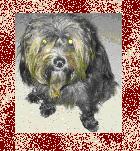
This is Derby Brown, my
YorkyPoo pal.
Two years old next April,
and ready to
stand lookout on any vessel
traversing
the English Channel in fog,
rain, snow,
or any other condition
similarly restri-
ting visibility. Licensed
also for keeping mates awake.
9) Whistle Sounds
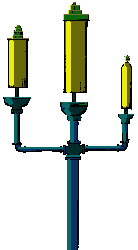
|
Click Button to sound whistle
|

|
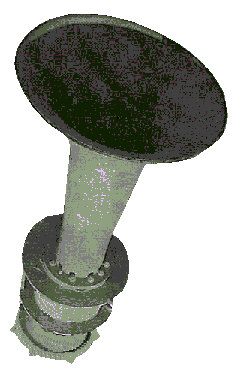
|
Graphic is of actual whistle assembly of the old Queen Mary loaned to the new Q M 2 do late in 2003. She will be the world's largest passenger ship at 150,000 gross tons.
It weighs one ton, and would stand six feet if stood vertical. Said to be heard ten miles distant without bothering passengers on deck. |
10 and final ) This Retired Seaman's View
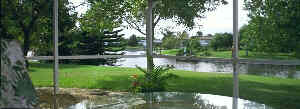 A retired seaman's view.
Not
A retired seaman's view.
Notmuch
water, but yet some.
Just
enough to day dream by.
.
| Top |
|
GALLERIES
|
